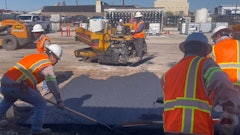One of the most common and most dangerous problems facing the power sweeping industry (and most contractors for that matter) is the egregious demands property owners make on the contractors they hire. Embedded in the contracts property managers use are clauses and wording that in effect transfers most (or all) risk to the contractor – even if the contractor isn’t involve in the activity that created the risk. Contractors, somewhat understandably, often hold their nose and sign the contract because they want the work and they want to establish or maintain the relationship with the customer.
The North American Power Sweeping Association (NAPSA) has had enough, and recently developed a national power sweeping standard through the American National Standards Institute (ANSI). As of our print date the draft had been sent to NAPSA members for comment and was well on its way to becoming an accepted ANSI standard (see article page XX).
Congrats to NAPSA! Associations need to do for individual contractors what those contractors can’t do for themselves, and developing a national standard that will help protect contractors from absorbing unreasonable risk transfer is a perfect example of that. So a tip of the hat to NAPSA – keep at it should you encounter any roadblocks.
It’s important to note, though, that even when adopted the ANSI standard doesn’t by itself protect contractors. What it will do for contractors who become ANSI-standard certified is level the playing field by detailing a defining a “scope of work” and detailing “best practices” -- essentially a national standard of performance. Contractors who are ANSI certified and who perform according to the standard will be able to use that certification as part of their defense should they get dragged into a frivolous lawsuit.
Until that standard is accepted by ANSI and can be relied on by contractors, this issue offers insights into how best to combat those risk-transfer clauses that are buried in many contracts. The article, “XXXXX” on page XX, is geared toward sweeping contractors but it can be applied to any contractor who encounters the problematic clauses.

























